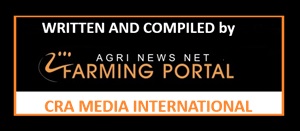World Farming Agriculture Commodity news - Weekly Updated - Exclusive and very popular - Delivering a Media service 365 days of the year.
Mexico’s sugar sector enters the 2025/26 cycle facing the challenge of maintaining market balance after two years of weak production and high inventories. Although the industry managed to reduce part of its surplus by the end of the 2024/25 season, the prolonged period of elevated stocks had already placed significant downward pressure on domestic prices and producer margins.
For the new cycle, key risks include higher sugar production, stagnant domestic consumption, weaker exports to the US, and persistently low global prices. Additional fiscal measures and public health campaigns may further dampen demand.A notable policy shift is the imposition of steep tariffs on sugar imports: as of 10 November 2025, Mexico introduced tariffs of 156% on most types of sugar and over 210% on refined liquid sugar, replacing the previous fixed tariff of approximately USD 360 per metric ton. This new regime is expected to curb imports and provide support for domestic prices.Beyond market fundamentals, strategic behaviour among producers and traders plays a crucial role in price formation, often leading to competitive dynamics that can drive prices down.While the recovery in cane yields is positive, structural issues such as flat consumption, high costs, and limited export competitiveness continue to constrain profitability. Diversification into energy and ethanol remains economically unviable under current conditions, so near-term stability will depend on keeping inventories close to 1 million metric tons.
![]()
- Liver → 25-hydroxy-cholecalciferol (calcifediol, 25-OH-D3) – the main circulating and transport form, reflecting vitamin D status.
- Kidney → 1,25-dihydroxy-cholecalciferol (calcitriol, 1,25-(OH)₂-D3) – the active hormonal form, tightly regulated by parathyroid hormone, plasma Ca/P levels, and feedback inhibition.

Two kings stand on opposite sides of the global chessboard, fighting for influence. They eye each other pointedly, and the pawns feel the tension. Instead of moving one step at a time in a prescribed, discrete manner, these kings behave more like knights, free-spirited, jumping over geographies and conventions, and attacking many squares across the board. Their movements are anything but predictable. Sometimes they seem to be part of a well-crafted master plan. At other times, they seem to lack coordination. Indeed, it is hard to move a piece with one hand while the other is rewriting the rules of the game.
The world is now a battlefield between two spheres of influence: the US and China. This power struggle includes wars like those in Ukraine and the Middle East and economic statecraft like tariffs, subsidies, and key export restrictions. Though this may seem obvious to anyone who reads a newspaper today, RaboResearch has been writing about a fragmented world for almost a decade (special credit to our global strategist Michael Every). Whereas agricultural outlooks written four years ago focused on supply and demand as their starting point, in the current climate, we must begin with geopolitics.
Mexico’s chicken meat production in 2026 is forecast to increase two percent to 4.2 million metric tons, extending the growth seen in 2025, according to a recent USDA FAS market report. Domestic demand for chicken meat and improved production practices are expected to support this expansion.
Investments in biosecurity and better production methods in 2025 significantly reduced hatchling mortality, a trend expected to continue into 2026. Disease prevention and control at production sites will remain central to achieving higher output.
Vertically integrated operations with more than 100,000 birds account for over 75% of Mexican poultry production and are expected to remain more resilient to volatility in input costs such as fuel and feed. This trend has continued, with large companies increasingly controlling more of the supply chain.

Mexico’s chicken meat production in 2026 is forecast to increase two percent to 4.2 million metric tons, extending the growth seen in 2025, according to a recent USDA FAS market report. Domestic demand for chicken meat and improved production practices are expected to support this expansion.
Investments in biosecurity and better production methods in 2025 significantly reduced hatchling mortality, a trend expected to continue into 2026. Disease prevention and control at production sites will remain central to achieving higher output.
Vertically integrated operations with more than 100,000 birds account for over 75% of Mexican poultry production and are expected to remain more resilient to volatility in input costs such as fuel and feed. This trend has continued, with large companies increasingly controlling more of the supply chain.
 World Farming Agriculture and Commodity news - Short update 17th November 2025
World Farming Agriculture and Commodity news - Short update 17th November 2025
Brazil’s Ministry of Agriculture has opened the entire Tanzanian market (previously limited to Zanzibar) to Brazilian poultry meat, pork, fertile eggs, day-old chicks, and other agri-products. Tanzania, Sub-Saharan Africa’s fourth-most populous nation (70 million people, projected to reach 140 million by 2050), has a fast-growing tourism and hospitality sector (17% of GDP) that drives strong out-of-home protein demand.In 2024, Tanzania imported 8,000 tonnes of chicken — 70% already from Brazil — and only ~100 tonnes of pork (mostly from Kenya and the EU). With nationwide access now granted, Brazilian exporters expect significant volume growth, especially in poultry and pork, capitalising on Tanzania’s rising population, urbanisation, and low current per-capita protein consumption (e.g., ~2 kg chicken/person/year).The Brazilian Association of Animal Protein (ABPA) hailed the move as a vote of confidence in Brazil’s quality and sanitary standards, further strengthening its footprint across Africa.



















